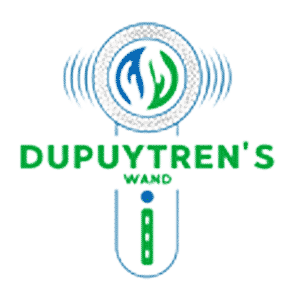
How to Manage Dupuytren’s Disease: Diagnosis, Treatment, and Prevention Tips
Share
Dupuytren’s Disease, also known as Viking Hand Disease, is a condition that affects the connective tissue in the palm of the hand. Over time, this tissue thickens and forms nodules or cords that gradually pull the fingers toward the palm, making it difficult to straighten them. While this disease does not usually cause pain, it can significantly impact hand function and quality of life.
In this article, we will discuss what Dupuytren’s Disease is, why early diagnosis is essential, available treatment options, and whether there are any preventative measures you can take. We will also address common confusion between this disease and trigger finger, and whether home remedies for trigger finger treatment play any role in managing Dupuytren’s.
What Is Viking Hand Disease?
The term Viking Hand Disease comes from the observation that this condition was historically prevalent among people of Northern European descent, especially those with Viking ancestry. Today, it is seen worldwide, but men over 50 of European heritage remain the most commonly affected group.
This condition is not caused by an injury or repetitive stress, although those factors might worsen symptoms. The exact cause is unknown, but genetics, smoking, alcohol consumption, diabetes, and certain medications may increase the risk.
Early Diagnosis Matters
Dupuytren’s Disease progresses slowly, often over years. It usually begins as small, painless lumps or nodules in the palm. As the disease advances, cords form beneath the skin, pulling one or more fingers (usually the ring and little fingers) toward the palm. This can make everyday tasks like shaking hands, holding objects, or typing very difficult.
Because the condition worsens gradually, many people ignore early signs. However, early consultation with a doctor is crucial. A professional evaluation can determine:
- The presence of nodules or cords under the skin.
- Range of motion in your fingers and thumb.
- Severity and progression of the disease.
Early detection allows for better management and potentially less invasive treatments.
Treatment Options for Dupuytren’s Disease
Currently, there is no permanent cure for Dupuytren’s Disease, but there are several ways to manage it and slow its progression.
1. Observation and Monitoring
If your condition is mild and does not interfere with daily activities, your doctor may recommend simply monitoring the disease. In some cases, Dupuytren’s stabilizes without significant progression.
2. Non-Surgical Options
- Enzyme Injections (Collagenase): These injections help break down the cords that cause contractures, improving finger flexibility.
- Steroid Injections: These can reduce inflammation and slow the development of nodules.
- Needle Aponeurotomy: A minimally invasive procedure that uses a needle to break the cords and straighten the fingers.
3. Surgical Intervention
For severe cases where fingers are bent to the point that daily activities become difficult, surgery may be necessary. Fasciectomy is the most common surgical procedure, where the diseased tissue is removed to restore finger movement.
Are There Preventative Steps?
Since the exact cause of Dupuytren’s Disease is unknown, true prevention is challenging. However, reducing risk factors can help:
- Avoid smoking and excessive alcohol consumption.
- Maintain good hand health with regular stretching exercises.
- Manage conditions like diabetes that increase your risk.
Although lifestyle changes cannot completely prevent the disease, they can improve overall hand flexibility and function.
Dupuytren’s vs. Trigger Finger: What’s the Difference?
Many people confuse Dupuytren’s Disease with trigger finger, another condition that affects hand movement. While Dupuytren’s involves the thickening of the fascia in the palm, trigger finger results from tendon inflammation that causes the finger to catch or lock in a bent position.
Some individuals try home remedies for trigger finger treatment—such as warm compresses, gentle stretching, splinting, and massage—to manage symptoms. While these remedies can be helpful for trigger finger, they do not cure Dupuytren’s Disease, as the underlying problem is different. That said, gentle hand exercises may help maintain flexibility in Dupuytren’s patients when combined with medical advice.
Self-Care and Home Management
Although you cannot reverse Dupuytren’s Disease at home, certain habits can help maintain mobility:
- Hand Stretches: Light stretching exercises recommended by your doctor can keep fingers more flexible.
- Massage and Heat Therapy: Applying warm compresses and gentle massage may reduce stiffness, though this is more effective for trigger finger than Dupuytren’s.
- Avoid Overexertion: Activities that strain the hands may worsen symptoms over time.
Final Thoughts
Viking Hand Disease, or Dupuytren’s Contracture, is a complex condition that requires medical attention for proper management. While there are no guaranteed preventative measures, early diagnosis and timely treatment can significantly slow progression and improve hand function. If you notice lumps in your palm or difficulty straightening your fingers, consult a doctor immediately.
Remember, while home remedies for trigger finger treatment can help with tendon-related issues, they do not treat Dupuytren’s. However, maintaining good hand health through stretching, avoiding excessive strain, and following your doctor’s advice can make a difference in managing this lifelong condition.
